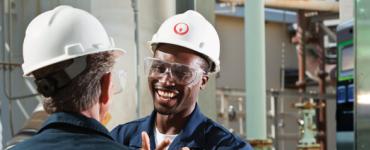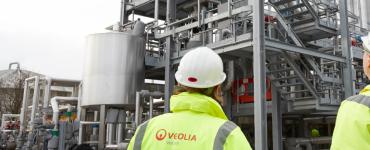- Home
- Latest News
- Reduce production costs with better water efficiency

Reduce production costs with better water efficiency
On-site treatment of wastewater reduces the cost of sewer discharge. For example, conventional biological treatment converts 80 - 90% of the wastewater COD into carbon dioxide, nitrogen and water and you can easily calculate the effect of this on sewer discharge costs using the Mogden formula. This can be by around £1.50/m3 for many food industry effluents. So, knowing the capital and operating costs of the on-site treatment plant you can calculate the payback.
How efficient is your product's water consumption?
Increasing the investment to install a membrane bioreactor (MBR) can achieve around 98 to 99% COD removal, making the treated effluent suitable for discharge to a river and eliminating sewer discharge costs altogether. A little further investment in a reverse osmosis plant allows the treated effluent from an MBR to be improved to a quality rather better than that of mains water.
The resulting permeate can be used to replace mains water for non-product-contact applications such as cleaning in place (CIP) and boiler or cooling tower make-up which, as the diagram shows, are the largest water consumption areas. Recycling not only reduces your water footprint, but the cost of this recycled water is usually much lower than that of mains water so there is a significant cost savings to be had.
As the diagram shows, much of the water used in the industry is for boiler and cooling tower make-up so it is logical to look for reductions here. The water losses from your factory boilers are mostly from steam losses and boiler blowdown and these are related. Steam contains a large amount of energy, and boiler blowdown consists of water, conditioning chemicals and heat energy. All of these you pay for, and the lower the condensate recovery the higher the blowdown.

So maximising recovery of steam condensate is important. But blowdown is also related to the quality of the make-up water. Softening may be sufficient to keep your boiler scale free but a more sophisticated treatment like reverse osmosis or deionised water will reduce the blowdown. Veolia's on-line RecoSMART calculator, which is part of Reco Solutions, will provide you with a quick estimate of just how much you can save by improving your make-up treatment.
If you already operate a reverse osmosis system for your boiler or cooling tower make-up you will be aware that there is a waste stream of up to about 40% of the permeate produced1. Veolia's RecoBLUE technology, part of Reco Solutions, can recover at least 50% of that waste stream at a quality that can still be used for make-up. The RecoBLUE on-line calculator will show you just how much you can save.
On-site treatment of wastewater reduces the cost of sewer discharge. For example, conventional biological treatment converts 80 - 90% of the wastewater COD into carbon dioxide, nitrogen and water and you can easily calculate the effect of this on sewer discharge costs using the Mogden formula. This can be by around £1.50/m3 for many food industry effluents. So, knowing the capital and operating costs of the on-site treatment plant you can calculate the payback.
How efficient is your product's water consumption?
Increasing the investment to install a membrane bioreactor (MBR) can achieve around 98 to 99% COD removal, making the treated effluent suitable for discharge to a river and eliminating sewer discharge costs altogether. A little further investment in a reverse osmosis plant allows the treated effluent from an MBR to be improved to a quality rather better than that of mains water.
The resulting permeate can be used to replace mains water for non-product-contact applications such as cleaning in place (CIP) and boiler or cooling tower make-up which, as the diagram shows, are the largest water consumption areas. Recycling not only reduces your water footprint, but the cost of this recycled water is usually much lower than that of mains water so there is a significant cost saving to be had.
As the diagram shows, much of the water used in the industry is for boiler and cooling tower make-up so it is logical to look for reductions here. The water losses from your factory boilers are mostly from steam losses and boiler blowdown and these are related. Steam contains a large amount of energy, and boiler blowdown consists of water, conditioning chemicals and heat energy. All of these you pay for, and the lower the condensate recovery the higher the blowdown.
So maximising recovery of steam condensate is important. But blowdown is also related to the quality of the make-up water. Softening may be sufficient to keep your boiler scale-free but a more sophisticated treatment like reverse osmosis or deionised water will reduce the blowdown. Veolia's on-line RecoSMART calculator, which is part of Reco Solutions, will provide you with a quick estimate of just how much you can save by improving your make-up treatment.
If you already operate a reverse osmosis system for your boiler or cooling tower make-up you will be aware that there is a waste stream of up to about 40% of the permeate produced1. Veolia's RecoBLUE technology, part of Reco Solutions, can recover at least 50% of that waste stream at a quality that can still be used for make-up. The RecoBLUE on-line calculator will show you just how much you can save.













